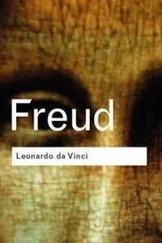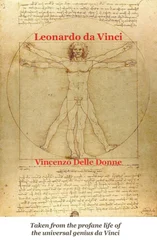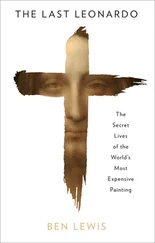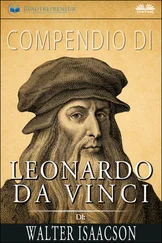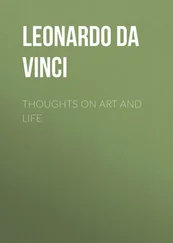Leonardo da Vinci - The Notebooks of Leonardo Da Vinci. Complete
Здесь есть возможность читать онлайн «Leonardo da Vinci - The Notebooks of Leonardo Da Vinci. Complete» — ознакомительный отрывок электронной книги совершенно бесплатно, а после прочтения отрывка купить полную версию. В некоторых случаях можно слушать аудио, скачать через торрент в формате fb2 и присутствует краткое содержание. Жанр: foreign_prose, foreign_home, visual_arts, foreign_antique, на английском языке. Описание произведения, (предисловие) а так же отзывы посетителей доступны на портале библиотеки ЛибКат.
- Название:The Notebooks of Leonardo Da Vinci. Complete
- Автор:
- Жанр:
- Год:неизвестен
- ISBN:нет данных
- Рейтинг книги:3 / 5. Голосов: 1
-
Избранное:Добавить в избранное
- Отзывы:
-
Ваша оценка:
- 60
- 1
- 2
- 3
- 4
- 5
The Notebooks of Leonardo Da Vinci. Complete: краткое содержание, описание и аннотация
Предлагаем к чтению аннотацию, описание, краткое содержание или предисловие (зависит от того, что написал сам автор книги «The Notebooks of Leonardo Da Vinci. Complete»). Если вы не нашли необходимую информацию о книге — напишите в комментариях, мы постараемся отыскать её.
The Notebooks of Leonardo Da Vinci. Complete — читать онлайн ознакомительный отрывок
Ниже представлен текст книги, разбитый по страницам. Система сохранения места последней прочитанной страницы, позволяет с удобством читать онлайн бесплатно книгу «The Notebooks of Leonardo Da Vinci. Complete», без необходимости каждый раз заново искать на чём Вы остановились. Поставьте закладку, и сможете в любой момент перейти на страницу, на которой закончили чтение.
Интервал:
Закладка:
Leonardo da Vinci
The Notebooks of Leonardo Da Vinci – Complete
The Notebooks of Leonardo Da Vinci
Volume 1
PREFACE
A singular fatality has ruled the destiny of nearly all the most famous of Leonardo da Vinci's works. Two of the three most important were never completed, obstacles having arisen during his life-time, which obliged him to leave them unfinished; namely the Sforza Monument and the Wall-painting of the Battle of Anghiari, while the third—the picture of the Last Supper at Milan—has suffered irremediable injury from decay and the repeated restorations to which it was recklessly subjected during the XVIIth and XVIIIth centuries. Nevertheless, no other picture of the Renaissance has become so wellknown and popular through copies of every description.
Vasari says, and rightly, in his Life of Leonardo, "that he laboured much more by his word than in fact or by deed", and the biographer evidently had in his mind the numerous works in Manuscript which have been preserved to this day. To us, now, it seems almost inexplicable that these valuable and interesting original texts should have remained so long unpublished, and indeed forgotten. It is certain that during the XVIth and XVIIth centuries their exceptional value was highly appreciated. This is proved not merely by the prices which they commanded, but also by the exceptional interest which has been attached to the change of ownership of merely a few pages of Manuscript.
That, notwithstanding this eagerness to possess the Manuscripts, their contents remained a mystery, can only be accounted for by the many and great difficulties attending the task of deciphering them. The handwriting is so peculiar that it requires considerable practice to read even a few detached phrases, much more to solve with any certainty the numerous difficulties of alternative readings, and to master the sense as a connected whole. Vasari observes with reference to Leonardos writing: "he wrote backwards, in rude characters, and with the left hand, so that any one who is not practised in reading them, cannot understand them". The aid of a mirror in reading reversed handwriting appears to me available only for a first experimental reading. Speaking from my own experience, the persistent use of it is too fatiguing and inconvenient to be practically advisable, considering the enormous mass of Manuscripts to be deciphered. And as, after all, Leonardo's handwriting runs backwards just as all Oriental character runs backwards—that is to say from right to left—the difficulty of reading direct from the writing is not insuperable. This obvious peculiarity in the writing is not, however, by any means the only obstacle in the way of mastering the text. Leonardo made use of an orthography peculiar to himself; he had a fashion of amalgamating several short words into one long one, or, again, he would quite arbitrarily divide a long word into two separate halves; added to this there is no punctuation whatever to regulate the division and construction of the sentences, nor are there any accents—and the reader may imagine that such difficulties were almost sufficient to make the task seem a desperate one to a beginner. It is therefore not surprising that the good intentions of some of Leonardo s most reverent admirers should have failed.
Leonardos literary labours in various departments both of Art and of Science were those essentially of an enquirer, hence the analytical method is that which he employs in arguing out his investigations and dissertations. The vast structure of his scientific theories is consequently built up of numerous separate researches, and it is much to be lamented that he should never have collated and arranged them. His love for detailed research—as it seems to me—was the reason that in almost all the Manuscripts, the different paragraphs appear to us to be in utter confusion; on one and the same page, observations on the most dissimilar subjects follow each other without any connection. A page, for instance, will begin with some principles of astronomy, or the motion of the earth; then come the laws of sound, and finally some precepts as to colour. Another page will begin with his investigations on the structure of the intestines, and end with philosophical remarks as to the relations of poetry to painting; and so forth.
Leonardo himself lamented this confusion, and for that reason I do not think that the publication of the texts in the order in which they occur in the originals would at all fulfil his intentions. No reader could find his way through such a labyrinth; Leonardo himself could not have done it.
Added to this, more than half of the five thousand manuscript pages which now remain to us, are written on loose leaves, and at present arranged in a manner which has no justification beyond the fancy of the collector who first brought them together to make volumes of more or less extent. Nay, even in the volumes, the pages of which were numbered by Leonardo himself, their order, so far as the connection of the texts was concerned, was obviously a matter of indifference to him. The only point he seems to have kept in view, when first writing down his notes, was that each observation should be complete to the end on the page on which it was begun. The exceptions to this rule are extremely few, and it is certainly noteworthy that we find in such cases, in bound volumes with his numbered pages, the written observations: "turn over", "This is the continuation of the previous page", and the like. Is not this sufficient to prove that it was only in quite exceptional cases that the writer intended the consecutive pages to remain connected, when he should, at last, carry out the often planned arrangement of his writings?
What this final arrangement was to be, Leonardo has in most cases indicated with considerable completeness. In other cases this authoritative clue is wanting, but the difficulties arising from this are not insuperable; for, as the subject of the separate paragraphs is always distinct and well defined in itself, it is quite possible to construct a well-planned whole, out of the scattered materials of his scientific system, and I may venture to state that I have devoted especial care and thought to the due execution of this responsible task.
The beginning of Leonardo's literary labours dates from about his thirty-seventh year, and he seems to have carried them on without any serious interruption till his death. Thus the Manuscripts that remain represent a period of about thirty years. Within this space of time his handwriting altered so little that it is impossible to judge from it of the date of any particular text. The exact dates, indeed, can only be assigned to certain note-books in which the year is incidentally indicated, and in which the order of the leaves has not been altered since Leonardo used them. The assistance these afford for a chronological arrangement of the Manuscripts is generally self evident. By this clue I have assigned to the original Manuscripts now scattered through England, Italy and France, the order of their production, as in many matters of detail it is highly important to be able to verify the time and place at which certain observations were made and registered. For this purpose the Bibliography of the Manuscripts given at the end of Vol. II, may be regarded as an Index, not far short of complete, of all Leonardo s literary works now extant. The consecutive numbers (from 1 to 1566) at the head of each passage in this work, indicate their logical sequence with reference to the subjects; while the letters and figures to the left of each paragraph refer to the original Manuscript and number of the page, on which that particular passage is to be found. Thus the reader, by referring to the List of Manuscripts at the beginning of Volume I, and to the Bibliography at the end of Volume II, can, in every instance, easily ascertain, not merely the period to which the passage belongs, but also exactly where it stood in the original document. Thus, too, by following the sequence of the numbers in the Bibliographical index, the reader may reconstruct the original order of the Manuscripts and recompose the various texts to be found on the original sheets—so much of it, that is to say, as by its subject-matter came within the scope of this work. It may, however, be here observed that Leonardo s Manuscripts contain, besides the passages here printed, a great number of notes and dissertations on Mechanics, Physics, and some other subjects, many of which could only be satisfactorily dealt with by specialists. I have given as complete a review of these writings as seemed necessary in the Bibliographical notes.
Читать дальшеИнтервал:
Закладка:
Похожие книги на «The Notebooks of Leonardo Da Vinci. Complete»
Представляем Вашему вниманию похожие книги на «The Notebooks of Leonardo Da Vinci. Complete» списком для выбора. Мы отобрали схожую по названию и смыслу литературу в надежде предоставить читателям больше вариантов отыскать новые, интересные, ещё непрочитанные произведения.
Обсуждение, отзывы о книге «The Notebooks of Leonardo Da Vinci. Complete» и просто собственные мнения читателей. Оставьте ваши комментарии, напишите, что Вы думаете о произведении, его смысле или главных героях. Укажите что конкретно понравилось, а что нет, и почему Вы так считаете.




